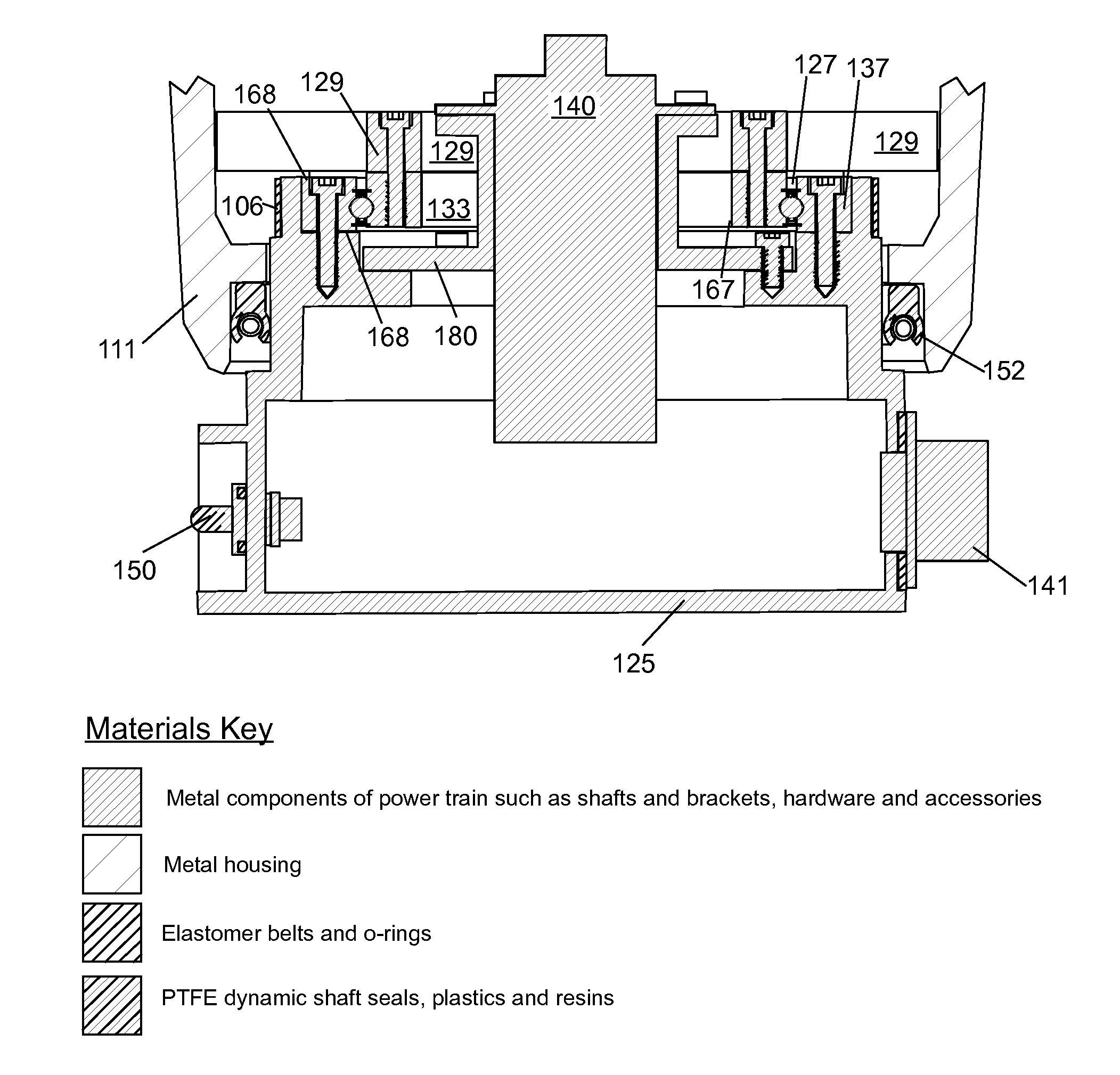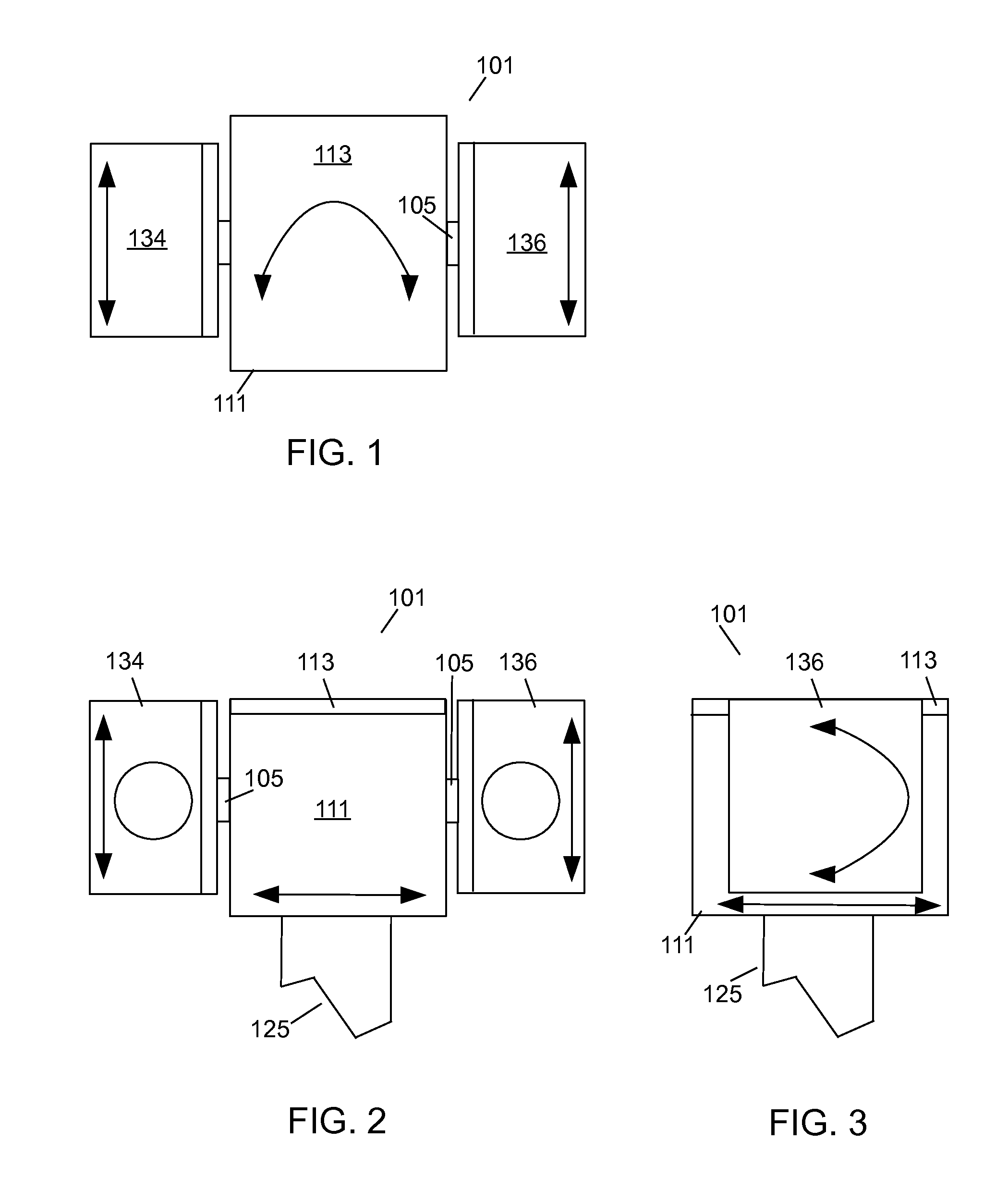Positioning device
a positioning device and positioning technology, applied in the direction of instruments, machine supports, gears, etc., can solve the problems of dislodging roller chains, affecting the accuracy of positioning, and complex and fragile geared drives, and requiring many components to perform precise positioning
- Summary
- Abstract
- Description
- Claims
- Application Information
AI Technical Summary
Benefits of technology
Problems solved by technology
Method used
Image
Examples
Embodiment Construction
[0082]The present invention is directed towards a robotic positioning device. With reference to FIGS. 1-3, a top view of an embodiment of the robotic positioning device 101 is illustrated in FIG. 1, a front view of the positioning device 101 is illustrated in FIG. 2 and a side view of the positioning device 101 is illustrated in FIG. 3. The positioning device 101 is mounted on a pan shaft 125 and can have a first payload 134 and / or a second payload 136 rigidly coupled to opposite ends of a tilt shaft 105. The first payload 134 and the second payload 136 can be almost any type of equipment including arms, cameras, lasers pointers, laser designators, laser range finders, laser power transceivers, spotlights, covert illumination, loud speakers, antennae, radar, sensors, less-lethal weapons, lethal weapons, and any combination of such devices mounted together into a multi-sensor package. The positioning device 101 can rotate about the pan shaft 125 and the tilt shaft 105 can rotate with...
PUM
 Login to View More
Login to View More Abstract
Description
Claims
Application Information
 Login to View More
Login to View More - R&D
- Intellectual Property
- Life Sciences
- Materials
- Tech Scout
- Unparalleled Data Quality
- Higher Quality Content
- 60% Fewer Hallucinations
Browse by: Latest US Patents, China's latest patents, Technical Efficacy Thesaurus, Application Domain, Technology Topic, Popular Technical Reports.
© 2025 PatSnap. All rights reserved.Legal|Privacy policy|Modern Slavery Act Transparency Statement|Sitemap|About US| Contact US: help@patsnap.com



